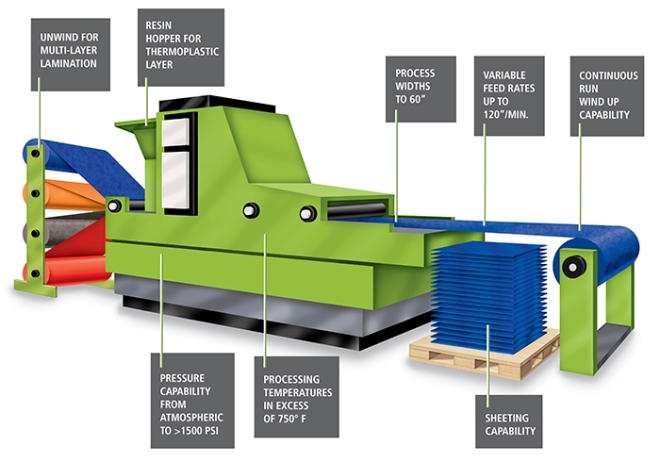A composite material is a compound that consist of two or more material components that have different physical and chemical properties. The resulting composite material has characteristics different from the individual constituents. In a composite material the different components are separated and distinct in finished layers. They have various uses that span all industries and applications. Examples of composite materials include cement for building materials, plastics like fiber-reinforced polymer, metal composites and ceramics like metal ceramics. Use of composites has grown in importance in spacecraft and in aircraft environments among other industries, and new composite materials are being developed constantly to advance the boundaries and capabilities of material science.
Thermoplastic composites.
A thermoplastic is a polymeric material that can be shaped into a viscous material at a temperature either higher than its transition temperature or a temperature above its melting point. Thermoplastics can be made up of a long, linear or branched materials which are separated away from each other chemically.
Production of composite materials does come with its own challenges such as a time-consuming or expensive production process, and potentially higher scrap rates. Thermoplastic composites have proved to overcome this problem as they are tough, stiff, and cost effective as they can be recycled.
Thermoplastic resins and fiber
When discussing thermoplastic composite materials, generally speaking the composite material will consist of a standard thermoplastic base resin which is combined with some other additive or constituent such as a metal powder, or carbon fiber. The purpose of the added constituent is to add or improve a specific physical property such as increasing impact strength by adding glass fiber.
Thermoplastic composites have several advantages which include efficient heat tolerance, longer half-life, relatively cheap, non-toxic and very low toxic level. They are also reusable, machinable, and flexible for shaping and reforming. Thermoplastics composites are also stiffer compared to other injected molded plastics. Other features that make the thermoplastic composites more useful is that they can be compounded to result in a material that is tougher and lighter compared to aluminum.
Thermoplastic composites have become of great importance in use in the aerospace industry. Use of carbon fiber reinforced plastic (CFRP) has become of great benefit in the production of aero crafts. Carbon-fibre reinforced thermoplastic are formed by compounding the carbon fiber directly into the base resin to result in an easily processed material that can be formed to shape. The resultant material is made to the right size and can consist of up to 60% by volume carbon fiber and 40% by volume resin.
A thermoplastic CFRP has great tolerance to fatigue and damage, it takes a shorter time to manufacture and has low moisture absorption properties making it appropriate for an aerospace environment.
Typical thermoplastic materials used include; carbon/PPS, carbon/PEKK, carbon/PEEK, carbon/PEI, glass/PPS, glass/PEI, and glass/PEEK.








0 comments:
Post a Comment